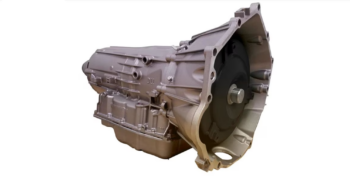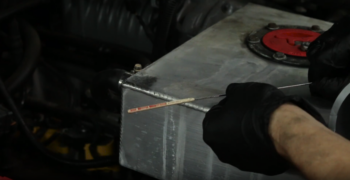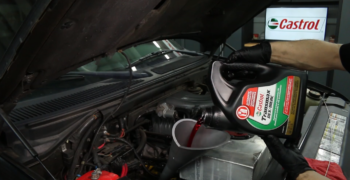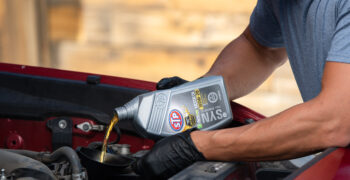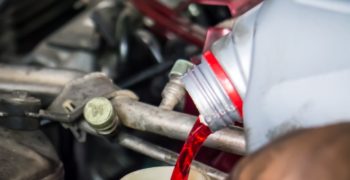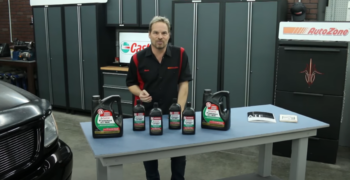Why Is My Transmission Shifting Hard?
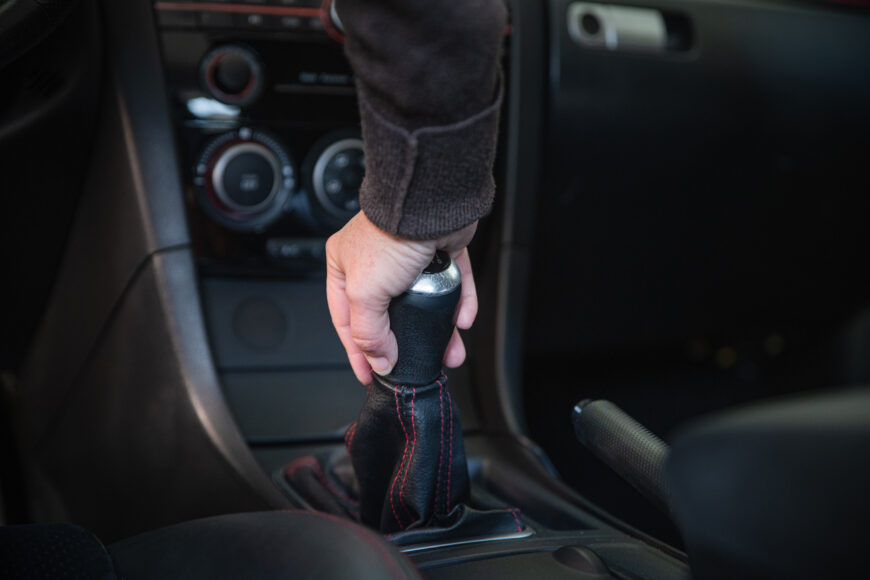
For any vehicle with an automatic transmission, an unpleasant and even unsafe symptom you might experience at one point is a hard shift. It can feel like you’ve been rear-ended or that a major component has fallen out from under your vehicle. The condition feels alarming and you might be wondering what’s going on.
The repair ranges from a simple fluid top-up to a complete rebuild or replacement that could cost $2,000 or more. If you’ve been asking, “Why does my transmission shift hard?”, find out what could be causing it here.
Understanding the Basics of Transmission Shifting
Imagine your car’s automatic transmission as a masterful conductor orchestrating a symphony of gears, ensuring a smooth and seamless performance as you cruise down the road. At the heart of your car’s transmission is a set of gears, much like those on a bicycle but far more sophisticated. These gears are responsible for adjusting the amount of power sent from the engine to the wheels. Shifting between the gears smoothly takes a highly coordinated effort.
- The Power Source – Your car’s engine generates power by burning fuel. This power needs to be converted into a usable form for the wheels, and that’s where the transmission comes in.
- The Torque Converter – Automatic transmissions use a torque converter, a clever device that transmits power from the engine to the transmission. Think of it as a fluid-filled coupling that smoothly transfers power.
- Fluid Power – Transmission fluid is circulated through a valve body and other solenoids to perform changes using fluid power, or hydraulic power.
- Gearing Up – As you start driving, the transmission begins in the lower gears. These gears provide more power to the wheels, allowing the car to accelerate efficiently.
- Smooth Transitions – When your car accelerates, the transmission shifts to higher gears, providing better fuel efficiency at higher speeds. Conversely, when slowing down, it downshifts to lower gears to maintain smooth operation.
- The Transmission Brain – Modern cars have a Transmission Control Module (TCM), which is like the brain of the transmission. It constantly monitors various factors such as speed, engine load, and throttle position to determine the best time to shift gears.
These functions help the transmission to shift smoothly, and under light acceleration, it’s almost soft enough that you don’t notice a shift at all. But any issues can cause the clunk or hard slam into the next gear which can be annoying and concerning.
Common Causes of Hard Shifting
Now, let’s delve into the culprits behind the scenes causing your transmission to shift hard. Identifying these common issues can empower you to address the root causes efficiently.
Worn or Contaminated Clutch Components
One of the primary contributors to hard are clutches that are either worn, overheated, or contaminated. The friction material on these clutch discs grabs unevenly or suddenly rather than engaging smoothly, contributing to the hard shift.
Low Transmission Fluid
One of the most common reasons for hard shifting is insufficient transmission fluid. Low fluid levels can lead to decreased hydraulic pressure, causing delays and rough transitions between gears.
Improperly Adjusted Bands
On older vehicles, delays in shifting as well as abrupt or harsh shifts can be caused by bands that are too tight. It can also cause premature wear on other internal components.
Transmission Mounts
Faulty transmission mounts aren’t holding the precise position between the engine and the gearbox and can disrupt the transmission’s alignment, consequently causing hard shifting.
Computer Relearning
Sometimes, computer-controlled transmissions can adapt behaviors that affect how shifts occur. There aren’t any mechanical issues at play, and a visit to a transmission shop or dealership to reprogram or relearn the transmission control module can correct the problem.
How Transmission Fluid Factors In
Imagine transmission fluid as the lifeblood of your vehicle’s shifting system. This hydraulic fluid lubricates and cools the transmission components, ensuring smooth operation. If your transmission is shifting hard, the transmission fluid might be trying to tell you something.
Low Transmission Fluid Levels
Low fluid levels can compromise the hydraulic pressure needed for smooth shifting. Regularly check your transmission fluid levels to ensure they are within the recommended range.
Contaminated Fluid
Dirty or contaminated transmission fluid can prevent the transmission from functioning as it should in many ways, including shifts. Regular fluid changes are essential to keep it working well.
DIY Solutions for Smooth Shifting
For DIYers eager to take matters into their own hands, here are practical steps to address hard shifting:
- Transmission Fluid Change – Changing the transmission fluid at regular intervals can enhance shifting performance. Refer to your vehicle’s manual for the recommended fluid type and change frequency.
- Reset the Computer – If a computer issue is the cause of your harsh shift, it might be possible to help the TCM to ‘forget’ its training. Disconnect the battery for an hour to power down the module, then drive normally for the module to re-train.
- Use a Transmission Additive – Some products claim to eliminate or improve symptoms such as a shudder or harsh shift. Choose a highly rated transmission additive and monitor for improvements.
When to Seek Professional Help
While DIY solutions can address many issues, some signs indicate the need for professional intervention. If you experience the following, it’s time to consult a professional:
- If your efforts to address hard shifting prove ineffective, it’s wise to seek the expertise of a mechanic for a thorough inspection.
- Strange noises during shifting, such as grinding or clunking, may indicate more severe transmission problems that require professional attention.
- If your vehicle’s dashboard lights up with transmission-related warnings, don’t ignore them. Professional diagnostics can pinpoint the issue accurately.
By understanding the basics of transmission shifting and recognizing common causes, you can navigate the road to smoother gear transitions. With a combination of DIY solutions and knowing when to seek professional help, you can keep your vehicle shifting smoothly for miles to come.
FAQ/People Also Ask
It could be due to factors like low fluid, worn clutches, or even a TCM programming issue.
Yes. It compromises the hydraulic pressure needed for smooth gear transitions.
The transmission filter plays a crucial role in smooth shifting by preventing contaminants from entering the transmission fluid.
Yes, there are additives available that can improve transmission performance by addressing issues such as slipping, rough shifting, and heat buildup.
You should check your transmission fluid levels regularly, typically every month or as recommended in your vehicle’s manual, to ensure they are within the normal range.
